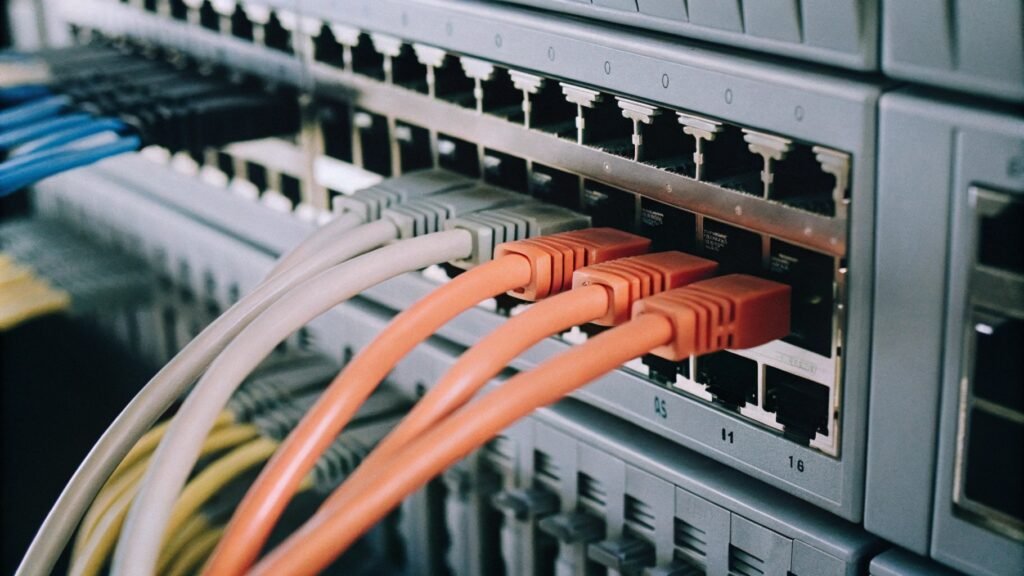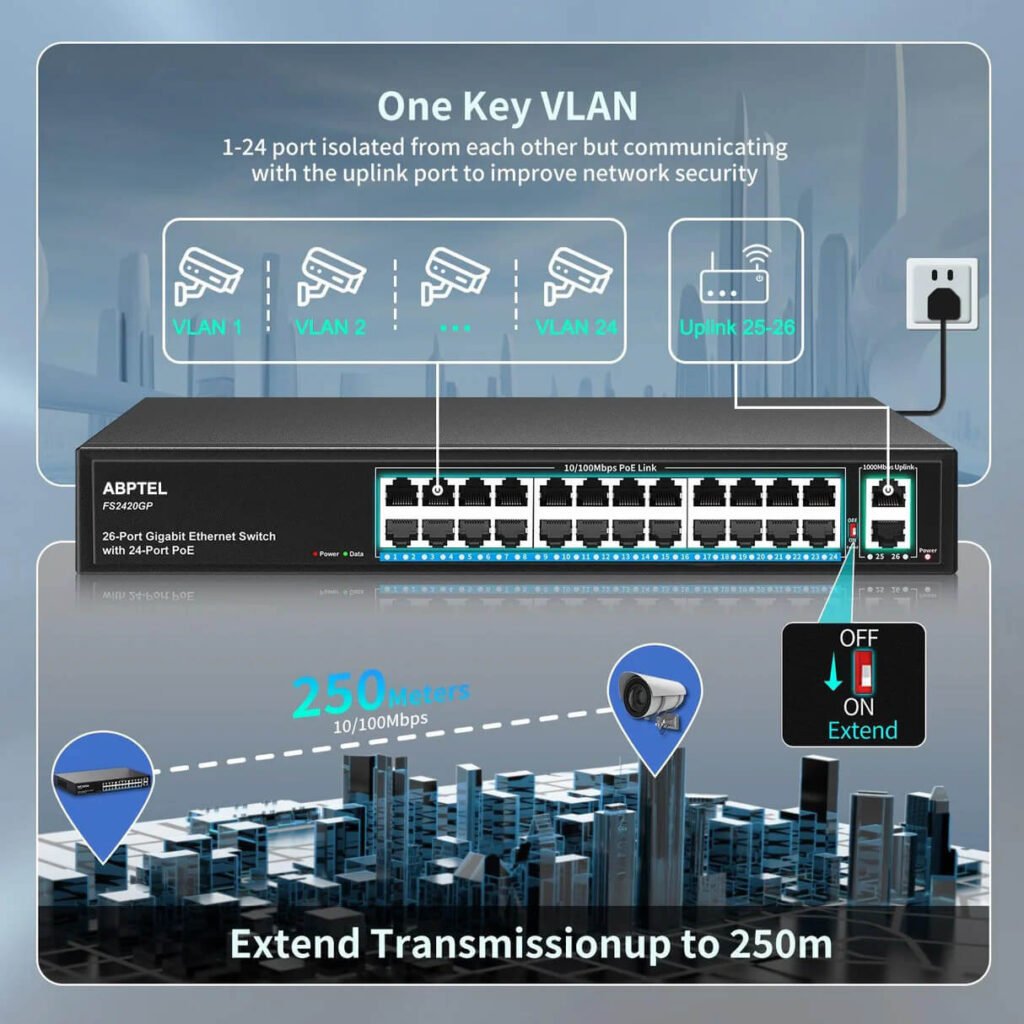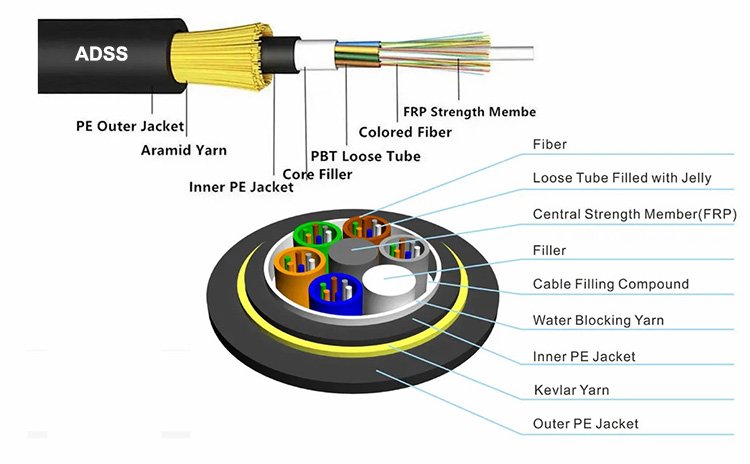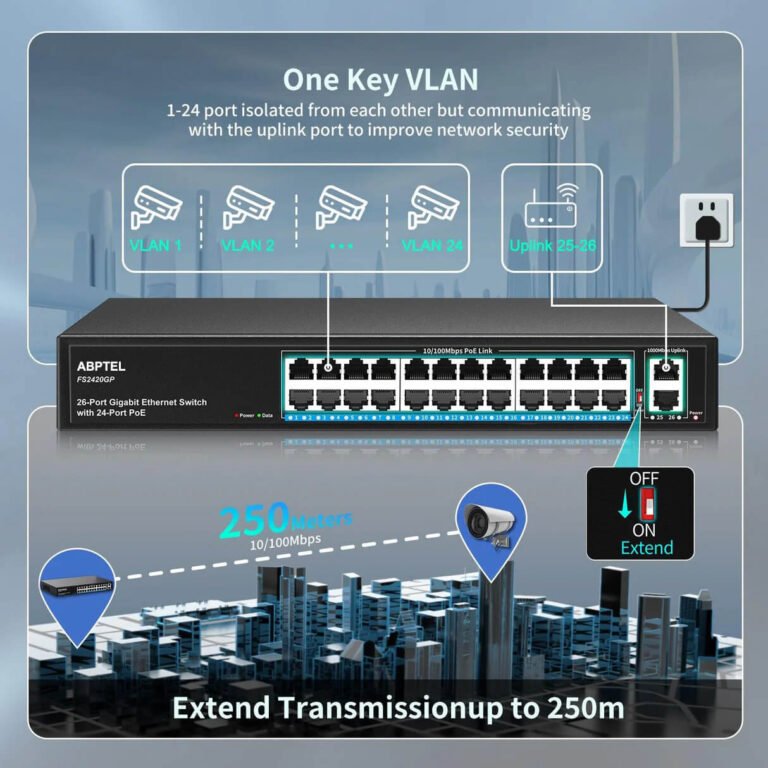What Exactly Is a PoE Switch?

Powering devices and transmitting data over a single cable can streamline your network setup. But how is this possible?
A PoE switch1 is a network switch that delivers both power and data to devices through standard Ethernet cables, simplifying installations and reducing the need for separate power supplies.
As someone who's spent years in optical communication engineering, I've seen firsthand how PoE switches revolutionize network deployments.
[Table of Contents]
- How Does a PoE Switch Work?
- What Are the Benefits of Using a PoE Switch?
- What Devices Can Be Powered by PoE Switches?
- Do All Switches Support PoE?
- How to Choose the Right PoE Switch?
- Conclusion
How Does a PoE Switch Work?
Understanding the mechanics behind PoE switches can demystify their advantages.
A PoE switch transmits electrical power along with data over twisted-pair Ethernet cabling to powered devices, using standard RJ45 connectors.

The Basics of PoE Technology
PoE technology combines power and data transmission, allowing devices like IP cameras and wireless access points to receive power without separate cords.
| Feature | Description |
|---|---|
| Power Delivery | Up to 30W per port (PoE+ standard) |
| Data Transmission | Supports speeds up to 10 Gbps |
| Cabling | Uses Cat5e or higher Ethernet cables |
The Role of Ethernet Cables
Ethernet cables serve a dual purpose in PoE setups, making installations cleaner and more efficient.
Safety Mechanisms in PoE Switches
PoE switches include safety features to prevent overloading and short circuits, ensuring reliable operation.
What Are the Benefits of Using a PoE Switch?
Why should businesses consider integrating PoE switches into their networks?
Using a PoE switch simplifies network installations, reduces costs by eliminating separate power supplies, and offers flexibility in device placement.
Cost Savings
By reducing the need for electrical infrastructure, PoE switches lower installation and maintenance costs.
Flexibility and Scalability
Devices can be placed in optimal locations without worrying about power outlets, enhancing network performance.
Simplified Infrastructure
A single cable for power and data reduces clutter and simplifies troubleshooting.
What Devices Can Be Powered by PoE Switches?
Curious about which devices are compatible with PoE technology?
PoE switches can power devices such as IP cameras, wireless access points, VoIP phones, and other networked equipment that supports PoE standards.
Common PoE-Enabled Devices
- IP Cameras: Ideal for security systems.
- Wireless Access Points: Enhances Wi-Fi coverage.
- VoIP Phones: Simplifies office communication setups.
PoE Standards and Device Compatibility
Understanding PoE standards ensures compatibility between switches and devices.
| PoE Standard | Power per Port | Typical Devices |
|---|---|---|
| IEEE 802.3af | Up to 15.4W | VoIP phones, simple cameras |
| IEEE 802.3at | Up to 30W | PTZ cameras, wireless access points |
| IEEE 802.3bt | Up to 90W | High-power devices |
Do All Switches Support PoE?
Is every network switch capable of providing PoE functionality?
Not all switches support PoE; only those specifically designed with PoE capabilities can supply power over Ethernet to connected devices.
Identifying PoE Switches
PoE switches are often labeled and have specific ports designated for PoE.
Upgrading Non-PoE Switches
If you have a non-PoE switch, you can use PoE injectors or upgrade to a PoE-capable model.
Considerations When Choosing PoE Switches
Evaluate the power budget, number of PoE ports, and compliance with PoE standards.
How to Choose the Right PoE Switch?
Selecting the appropriate PoE switch is crucial for network efficiency.
To choose the right PoE switch, consider factors like total power budget, number of PoE ports needed, supported PoE standards, and network speed requirements.
Assessing Power Requirements
Calculate the total power consumption of all PoE devices to ensure the switch can handle the load.
Evaluating Port Density
Determine the number of devices to connect now and in the future.
Considering Network Speeds
Choose between Gigabit or higher speeds based on data transmission needs.
Comparing Managed vs. Unmanaged Switches
Managed switches offer advanced features like VLANs and QoS, while unmanaged switches are plug-and-play.
Conclusion
PoE switches offer a streamlined solution for powering network devices, combining efficiency with flexibility. By understanding their functionality and benefits, businesses can optimize their network infrastructures effectively.
-
Learn more about PoE switches and their functionalities to understand how they integrate power and data transmission in networks. ↩





